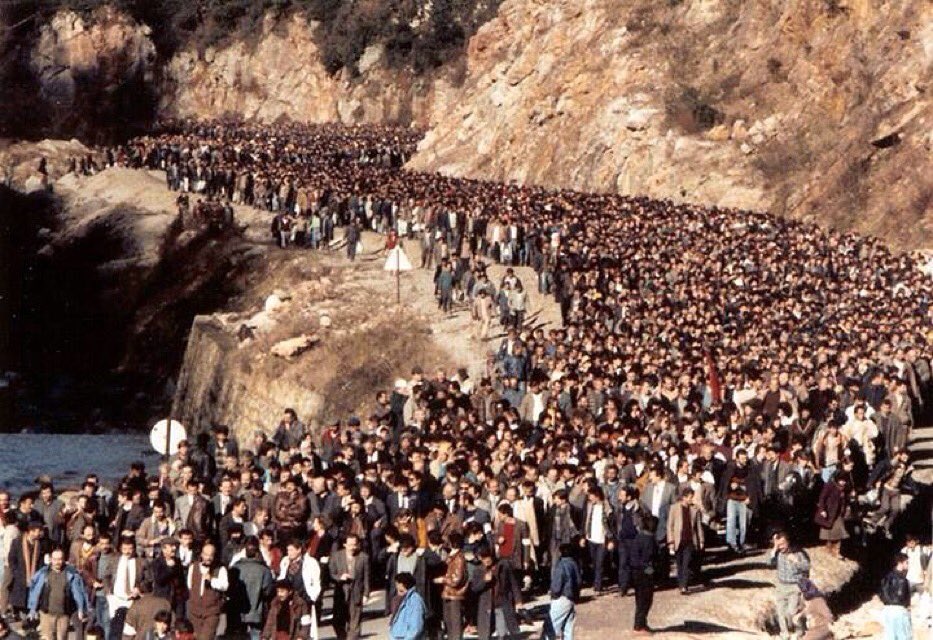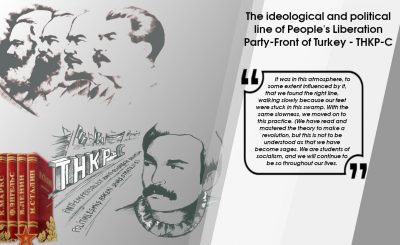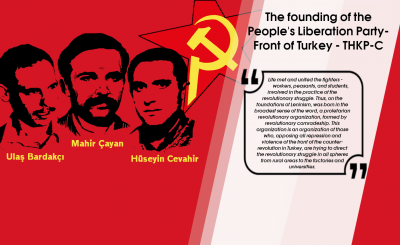The resistance of miners from the Zonguldak province, northwestern Turkey, which marked 1991, was not a resentment that erupted spontaneously. It was a revolt against the hundreds of victims and thousands wounded in the mines. It was a revolt against the ANAP(a neo-liberal fascist party that ruled Turkey in 1980s and 1990s) government, which wanted to drop the burden of the imperialist war on the people. This revolt was the revolt of the working class and of all peoples of Turkey, which was silenced and oppressed by the fascist military junta that came to power after the September 12, 1980 coup.
At the end of 1990, negotiations for collective agreements affecting a total of 300,000 workers from various sectors of the economy had ended without a positive outcome for workers. Of those 300,000 workers, 50,000 were miners who had the legal right to strike. Under the laws in force in Turkey at the time, all civil servants, as well as workers in some sectors of the economy, were not allowed to go on strike. That is why the miners, acting responsibly on behalf of all the other miners and the whole working class, clearly expressed their position – they began a resistance.
In the city of Zonguldak, the center of the coal industry in Turkey, protest rallies and marches were taking place almost every day. The resistance very quickly crossed the borders of Zonguldak and spread throughout the country. Along with members and supporters of the Revolutionary Left Forces (then the name used by the People’s Front-Turkey), the Revolutionary Workers ‘Movement (workers’ organization of the People’s Front), both on the local level and from different parts of Turkey, members of the Revolutionary Youth, the Trade Union of Municipal workers, TAYAD – the Association for Solidarity and Mutual Assistance to the Families of Political Prisoners, DEMKAD – the Association of Women in the Struggle for Democracy, Artists and Intellectuals, went to Zonguldaк, where they work resolutely and consistently in the organization of the demonstrations and the rise of the call for General strike.
The strength of the resistance gradually spread all the whole country and thus created the conditions for a general strike in Turkey. The state-controlled trade union Türk-İş is forced to decide to go on a general strike.
On January 3, 1991, life in all of Turkey stopped. Workers, civil servants, school and university students, lawyers, housewives, taxi and bus drivers, over 2 million laborers, oppose the power of Turgut Ozal(then Turkish prime-minister) and the preparations for imperialist war(Gulf War), and against fascism in Turkey. The People’s Front played a key role in calling for a general strike to reach the masses, in mobilizing workers and taking them to the streets, and in general for the politicization of the strike and the resistance. The repressions of the fascist oligarchy and the state-controlled trade union Türk-İş were overcome.
The January 3 resistance involved not only workers but also civil servants, students, inhabitants of the poor neighborhoods, street vendors, public transport drivers, women, and lawyers, thus giving even more force to the general strike.
On January 4, the miners’ goal was to reach Ankara. The miners, their families, and many members of the forces supporting their struggle, or in other words an army of 90,000, gathered in front of the Miner’s monument in the city of Zonguldak to begin the largest march of workers in the history of the working class in Turkey.
Passing through the central part of the city, the workers head to the town of Devrek, Zonguldak province, the next town on their path was Mengen, in the province of Bolu, and their ultimate goal was to reach the E-5 road. Shaking the earth and the sky, expressing their anger, the workers set off on their route to the capital city Ankara. They were joined by residents of the surrounding villages, thus the procession stretched for kilometers. As the workers continued their march, numerous strikes took place in the other provinces of Turkey.
The support and solidarity that the miners received were unprecedented until then. The fascist oligarchy blocked workers’ path. In the face of this support of the people for the miners, the government, the bourgeois opposition, and the state controlled trade union Türk-İş were all trying to end the resistance. The first blockade on the miners’ road was set up in the Dorukhan tunnel, located about 140 kilometers from the city of Zonguldak. The blockade was successfully overcome, with a procession of more than 100,000 workers reaching the town of Mengen.
The next blockade on the way to the workers was near the village of Eskiçağ, Bolu Province, northwestern Turkey. Despite all the fatigue accumulated in them, the workers want to overcome the blockade that stood in their way.
But GMİS, the General Trade Union of Miners, and its chairman, Şemsi Denizer, bowed their heads to repression and threats from the fascist oligarchy, deciding to stop the march and return to the city of Zonguldak. The workers, despite their disappointment, chanted their slogans with anger and determination: “The struggle will continue, the blockades will be broken!”
Source: Our Brief History, People’s Front-Turkey Publishing House, 2019, pp. 83-85



